Hot rooms, irritable customers, high expenses: How Austin restaurants battle the heat wave
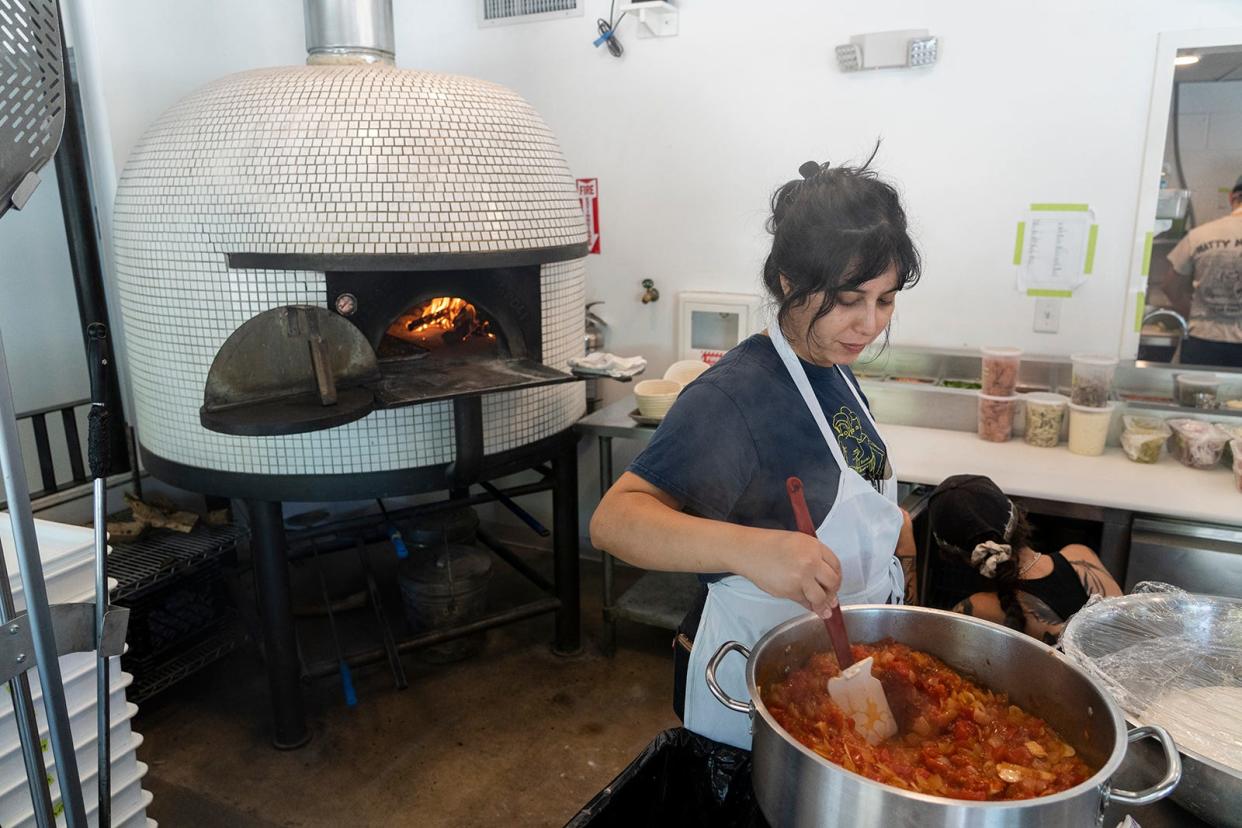
Brutal. Unprecedented. Crippling. These are some of the words people utter when discussing the summer of 2023 in Central Texas.
July saw the mercury hit 100 degrees almost every day, and August has not taken its foot off the gas. Little relief lies ahead, though your social media feeds probably have people joking about the relief of 97-degree days on the horizon.
Those stuck in Austin to ride out the heat wave have sought refuge at local pools, swimming holes and movie theaters. But restaurants, one generally reliable resource for escaping hot weather, have been as battered by the heat as the rest of us.
More: Austin breaks 100-year-old record of 105-plus temperatures — again
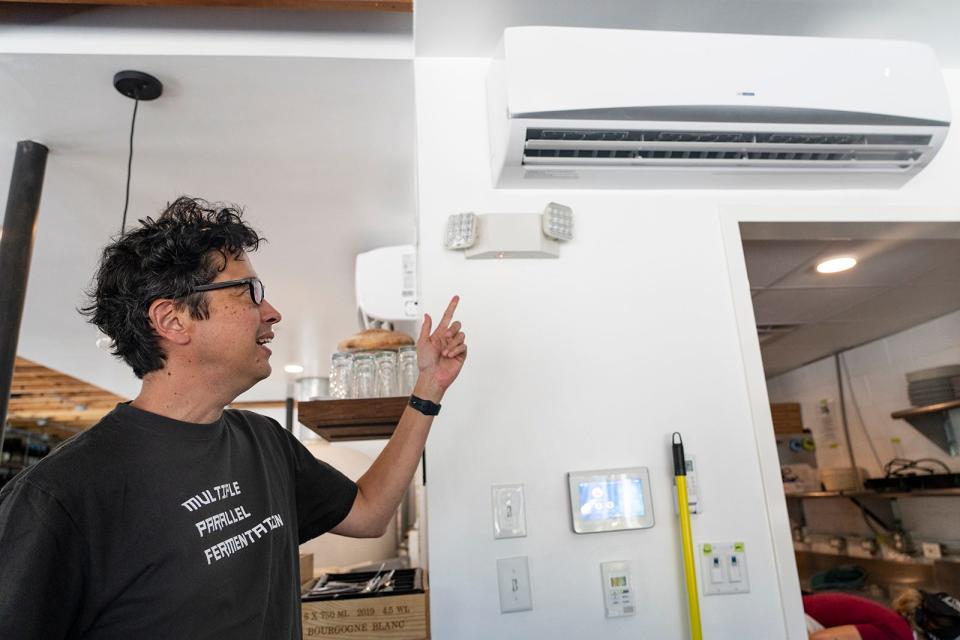
Many restaurants have endured lighter foot traffic; lower sales; higher electricity and repair costs; and warmer indoor temperatures in what has been a record-setting hot streak of 50 consecutive 100-degree days (and counting).
Some restaurants have adjusted hours, and at least one popular restaurant (Uchiko) had to close for a couple of days to figure out how to bring down the temperature inside its space.
“It’s been brutal. The slowest summer we’ve ever had,” Lenoir co-owner Todd Duplechan told the American-Statesman in early August.
Duplechan is also a partner in Goan-inspired Vixen’s Wedding in East Austin and Dovetail pizzeria across the street from his fine dining Lenoir on South First Street. He said he believes that people who had the means to leave Austin this summer headed for cooler climes and that those who might have considered coming to Texas from out of state looked at the weather and made other (smarter) plans.
“Everybody that I talk to has some realm of their business that is down. Certainly, people who have older restaurants like we do, they’re feeling it,” said Duplechan, who added that some of the slowdown in spending could be coming from belt-tightening as people worry about a possible economic downturn coming.
More: Hudson’s on the Bend has reopened (again): Here’s what you need to know
In addition to the lighter traffic that led to a double-digit decline in sales compared to last July, Duplechan said he had to spend money to buy a new air conditioner and new walk-in refrigerator, and repair multiple refrigerators that are struggling in the relentless heat. His July electric bill also was 20% higher than last year at the same time.
Adding to the cost of doing business, the Texas Restaurant Association reports that food costs are up 24% and labor costs are up between 13% and 23% compared with pre-pandemic levels.
Summer months usually prove to be the hardest for restaurants (along with January), but Duplechan said he has always been happy to make a little money or at least break even during those droughts. That’s not the story in 2023.
“We’re at a point where we’re putting money into the business, we’re not taking money out of the business,” Duplechan said. “If your A/C goes out and that’s 10 grand, you’re losing money. That’s what makes the restaurant business so hard: The margins are so slim, and things are expensive.”
Given the relatively small space of the bungalow restaurant, Duplechan said he and wife Jessica Maher have considered treating Lenoir as a seasonal business and closing in July and August in the future, though he thinks the math probably wouldn’t make sense.
'We just couldn’t keep the restaurant cool'
Small, independent restaurants aren’t the only ones having to adapt. Well-funded restaurants aren’t immune to Mother Nature or the limits of mechanical engineering. Uchiko, the elegant sushi restaurant that is housed in a modern building complex on North Lamar, had such trouble mitigating the heat that the daily restaurant closed for service on July 9 and 10 to get a handle on the indoor climate.
“We just couldn’t keep the restaurant cool,” Hai Hospitality director of operations Leo Barrera told the Statesman.
More: Ceviche, sushi and Szechuan: What to eat at Austin restaurants to beat this heat
Barrera said that his employees’ comfort level was the primary consideration in temporarily closing while they checked out their cooling systems. They brought in eight large portable fans to the dining room that remained on the floor at Uchiko until early August
“We’re nimble, and we’re going to do the right thing for our people and our guests,” Barrera said. “It does feel like a new normal. I think this is going to be our world for some time.”
The temporary necessity and aesthetic intrusions have become a common sight at restaurants both casual and fancy around town this summer.
Bufalina owner Steven Dilley opened a location of his celebrated Neapolitan pizza restaurant in November on East Cesar Chavez Street, down the street from the original location opened in 2012.
He and his engineers designed it in a way that would have operated comfortably in a “normal summer,” Dilley told the Statesman. But they had to add multiple fans to the dining room and purchased two mini-split air conditioning units this summer and are “still just barely hanging on during service.”
“Every single day, it’s just a beat down,” Dilley said about the weather, which combines with the restaurant’s wood-burning oven to raise temperatures in the dining room to the edge of discomfort.
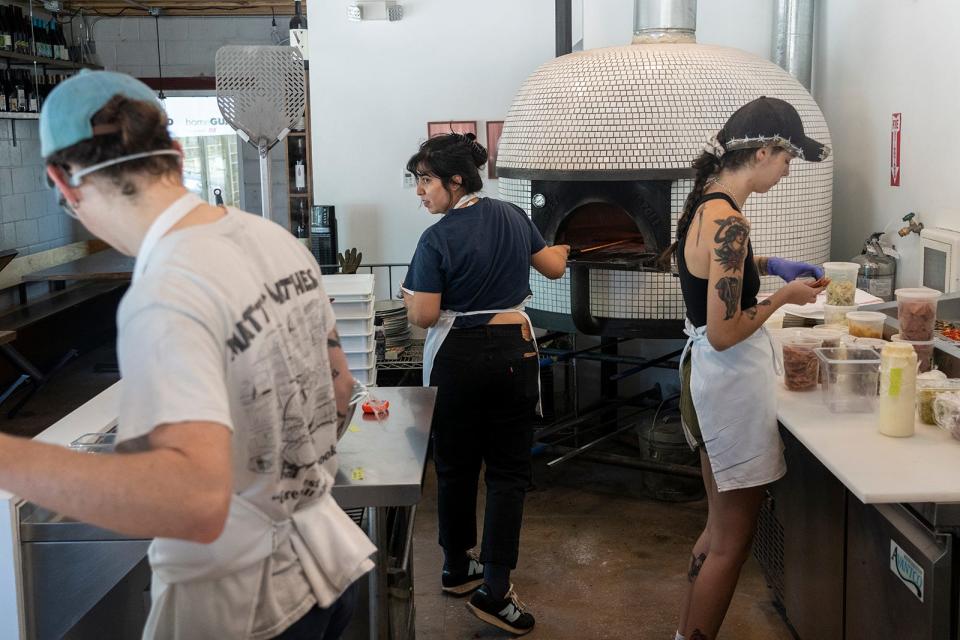
'Just be kind; we’re all hot'
The high temperatures are a challenge for servers who have to work for hours in warm restaurants and for guests. Hospitality veteran and Bufalina server Leenie Boyle said the heat can make guests difficult and thinks it’s important that people on both sides of the equation exercise empathy amidst the swelter.
“Guests complain to servers, who are literally sweating over them, that, ‘It’s too hot in here,’” Boyle said. “Makes dinner service pretty rough. Doesn’t help that dehydrated guests get drunk faster. Not much you can do, though, just be kind; we’re all hot. I think people forget on both sides of the spectrum that we’re all going through it together.”
Some diners have altered their habits because of high temperatures.
Adrienne Byard, who works as brand ambassador in the spirits industry, compared leaving the house in extreme heat to the hassles of dealing with a blizzard. She said that “blisteringly hot cars” and “hot parking garages” have dissuaded her from dining as regularly as she usually does, adding that the weather had sapped her appetite and prevented her from dressing up or putting on makeup.
Irina Jolic and her husband, Patrick Pierce, are accustomed to dining out two or three times a week, but this summer has made them adjust their patterns. The couple are dining out less frequently, especially after 2 p.m.
Related: Coldest dining rooms and tips for dining out in the heat
“I do feel bad that we aren't getting out and supporting these local businesses when they need it most, but it's genuinely too hot, and the anxiety of going out is too high for me. It doesn't help that I am also pregnant,” Jolic said. “We have been more inclined to dine out for breakfast and brunch when we can since it's cooler in the mornings. We also do order food to be delivered more often. Regardless, though, we are still not supporting local businesses as much as we used to.”
The slowdown in customers over the summer not only hurts restaurants’ bottom lines, the sluggish sales usually trickle down to front-of-house workers who rely on tips.
“The decrease in tip income and the increase in energy bills at home make the budget much tighter for dining out, as well,” Caleb Richardson, a server at new wine shop/restaurant Underdog on South First Street, told the Statesman. “Mainly bummed it’s too miserable outside to hang at some of my favorite spots like Better Half. Additionally, the A/C in my car just stopped working this week so I’ll certainly be driving even less until I have more money to fix it.”
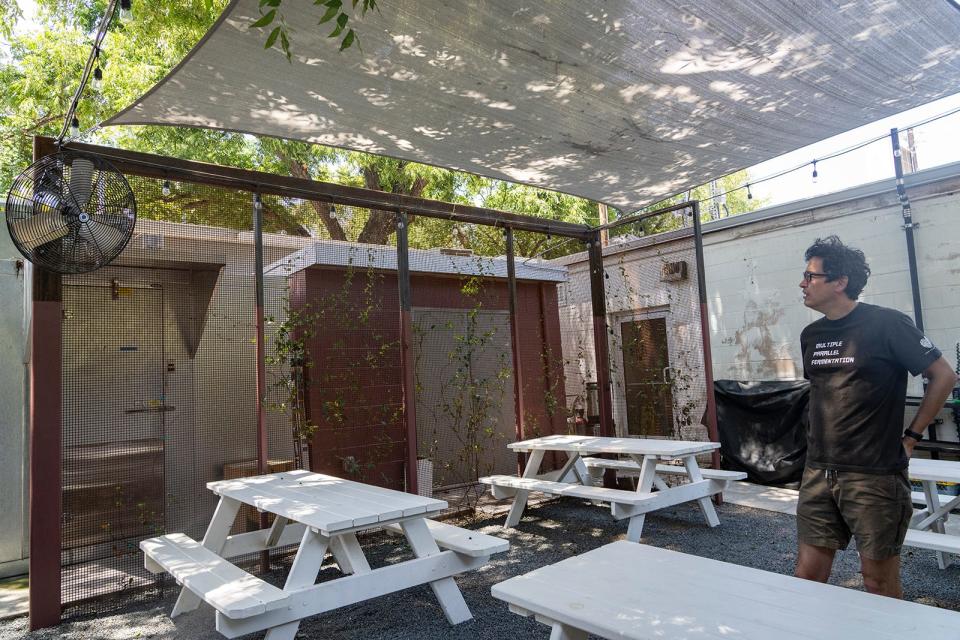
Outdoor dining just about impossible in this heat
The hot weather has made indoor dining a challenge at times, but it has made outdoor dining a near impossibility. Bufalina stopped seating in its outdoor dining area and has been using it as a de facto waiting area for wine service.
Better Half is one of many restaurants around town that rely heavily on outdoor seating. The majority of the seating at the all-day cafe and bar and its sibling brewery Hold Out, which sits on the same property, is outside.
Matt Wright, a partner in the hospitality group that operates the two businesses, said that sales were down about 20% from expected July numbers. Compounding the slowdown, Wright says the owners have had to spend more than $10,000 on air conditioning repairs.
The summer challenges have led the owners to reconsider operations. They decided to build out a space that had been used for storage and was planned as an event space. Instead, it's now a seating area that should prove popular in the summers ahead.
Related: Bufalina owner opening Palm Pizza, serving New York-style pies
The group also operates Little Brother Bar on Rainey Street and Little Brother Coffee & Kolaches on South Congress Avenue, which have both been hit hard by the lack of foot traffic in their usually crowded entertainment districts. The South Congress walk-up window is down 40% in sales compared with April, Wright said, prompting the coffee shop to start serving frozen coffees to lure in sweaty passersby.
Wright said that following four years of both hot and cold weather-related events and a pandemic caused by a virus, operators in Austin just want “a regular year.”
“And in the future, we may not get those. It’s a little daunting,” Wright said.
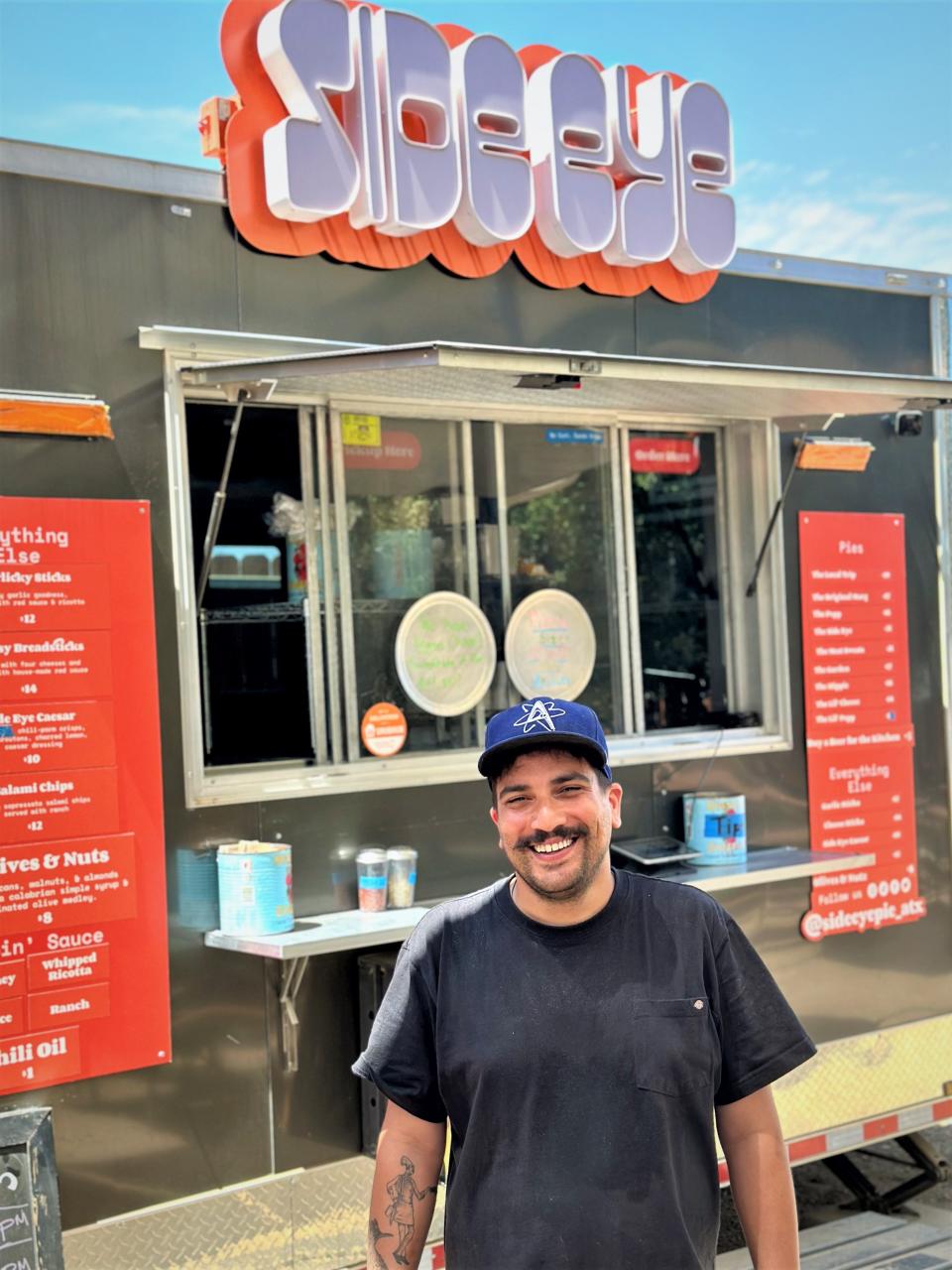
What's happening in food trucks and trailers?
Dining in a hot restaurant is one thing. Standing in line at a food truck or trailer is a different ballgame. Though many trailers are connected to bars or breweries that have air-conditioned spaces that can be used by trailer diners, the thought of standing in line outdoors or competing with other patrons for limited indoor space has crippled the business at many food trucks this summer.
Side Eye Pie owner Tony Curet knows he’s lucky that his pizza trailer is at Meanwhile Brewing Co., one of the city’s most popular breweries. Still, he has seen a massive dip in numbers. His July sales were down 50%-70% from July 2022, though he acknowledges his trailer was riding high on early momentum from the opening last summer.
Bob Somsith can relate to the misery and to using a brewery walk-in as a de facto cooling space. His SXSE Food Co., which specializes in Southeast Asian street food, is next to Vacancy Brewing in an industrial strip in South Austin.
A fryer that bubbles at 350 degrees and a flattop grill that can reach 500 degrees can make life in the 18-by-7-foot trailer unbearable. And the air conditioning unit connected to the trailer is little help when the cool air is constantly getting sucked out by the vent hood over the cooking units.
The ambient temperature inside the trailer can range from 109 to 130 degrees, depending on how much food is being cooked.
“We’ve delayed opening on certain days so that the team doesn’t have to suffer too long, but it’s still no cakewalk,” Somsith said. “We’re now starting to use cooling vests that you can place ice packs in. It’s helped tremendously to keep that body core temperature down. The team is encouraged to drink not just water but electrolytes.”
The Occupational Safety and Health Administration has published free best practices and resources restaurants can use to prevent heat-related illness. Protocols include drinking plenty of water, taking rest breaks, dressing for the heat and building tolerance to heat over time.
Somsith, like Curet, is grateful for his brewery relationship, though Vacancy is tiny compared with Meanwhile Brewing, and Somsith thinks many customers are not aware there is an air-conditioned space for dining.
“Most customers have that notion that if you dine at a food truck you’re either picking it up for takeout or dining in the heat,” Somsith told the Statesman. “It’s probably why our sales numbers are lower than normal and summers are typically slow for all of us in general.”
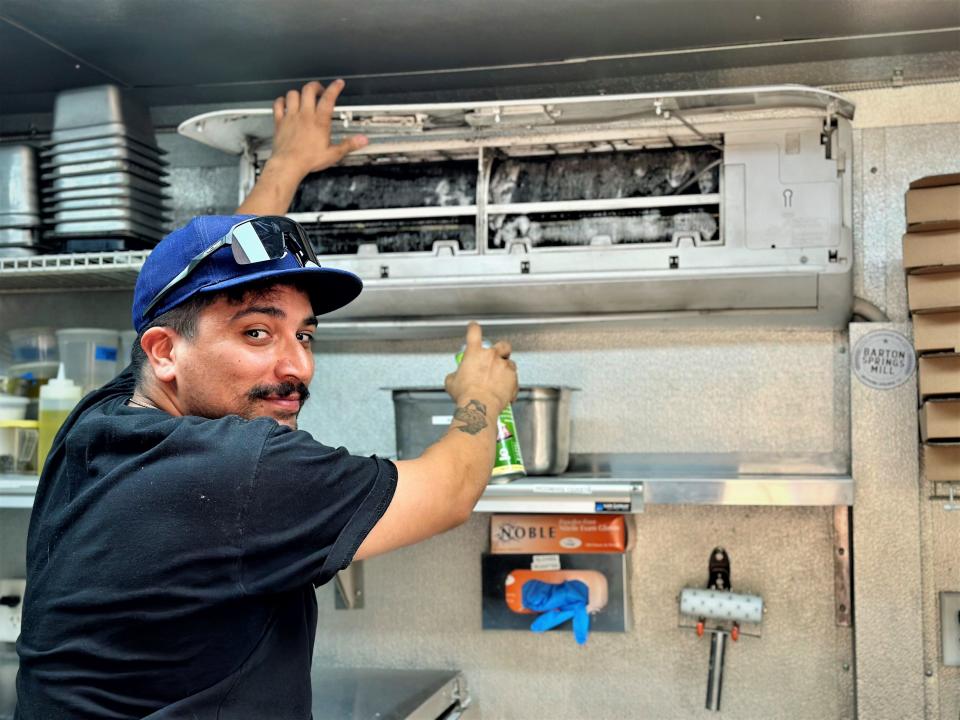
Fellow trailer owners have told Curet in the past that he has the coldest trailer in the city, but even with an air conditioner that he services himself monthly and five fans in his trailer, he still sees temperatures regularly in the 90s.
Curet has been buying Gatorade, liquid IV treatments and canned water for his dozen employees, for whom he offers health insurance benefits, but he has still had to cut hours. When the temperatures become unbearable in the trailer, Side Eye staff, as well as those working at the adjacent Distant Relatives trailer, dip into the walk-in refrigerator at the brewery to cool down.
'This industry continues to face an uphill climb at every turn'
The heat hasn’t just hampered existing restaurants and trailers. The summer roast has intimidated would-be operators, who are having to work some new calculus when determining whether they should even go into business in Central Texas.
Emmer & Rye and Tatsu-Ya group veteran Jeremy Young, who owned and operated Tootsie Louis Tacos in Nashville, Tenn., has been planning an American-Asian fast-casual restaurant in Austin, but the relentless heat is making him rethink what it will take to survive.
“It’s another factor in an endless list that must be considered in the buildout and design process. The barrier of entry is continually being raised,” Young said. “For example, it is no longer sufficient to simply have a patio space and improve it over time as we are able; fans and misters are mandatory for the comfort of our guests. All of this adds to the opening budget, which further bloats the initial investment and extends the timeline toward profitability. Already long odds made longer. This may not cause much duress for a well-funded corporate entity, but for local, self-funded startups that eschew overbearing investors, every additional expense is potentially devastating. The truth is this industry continues to face an uphill climb at every turn.”
This article originally appeared on Austin American-Statesman: How Austin restaurants and food trucks are battling historic heatwave

